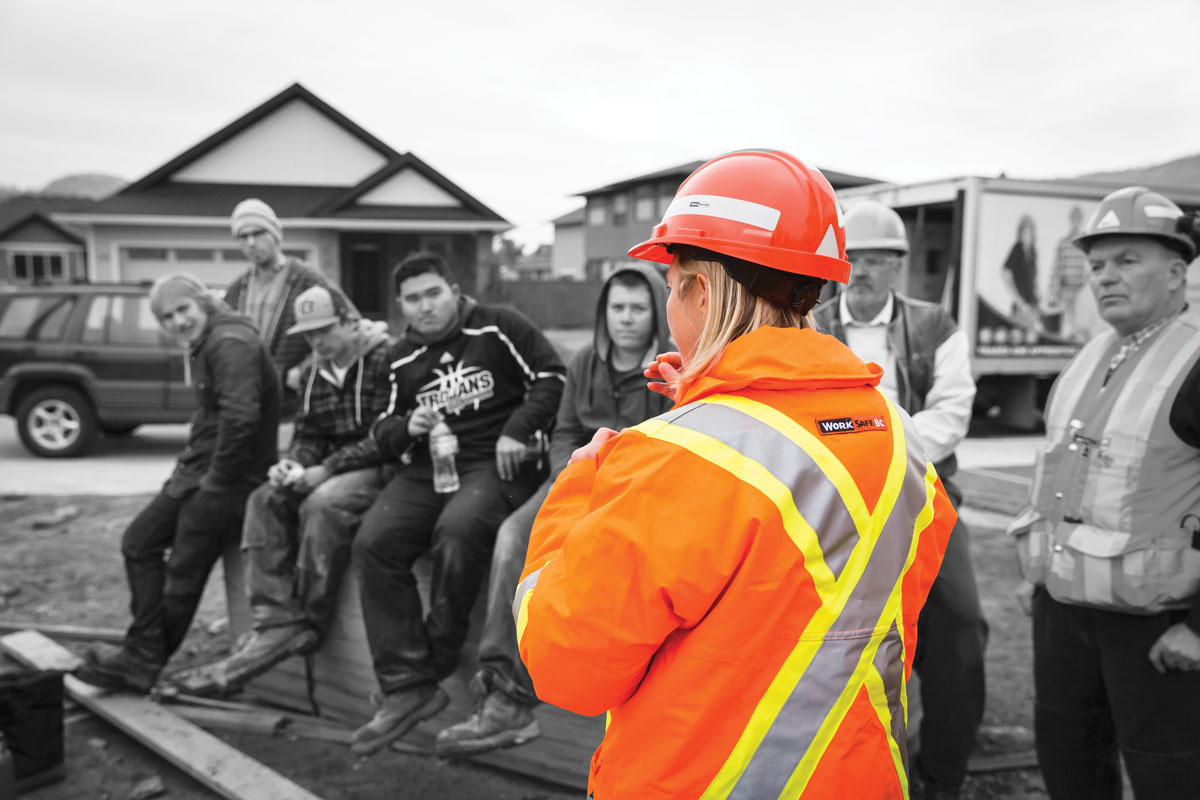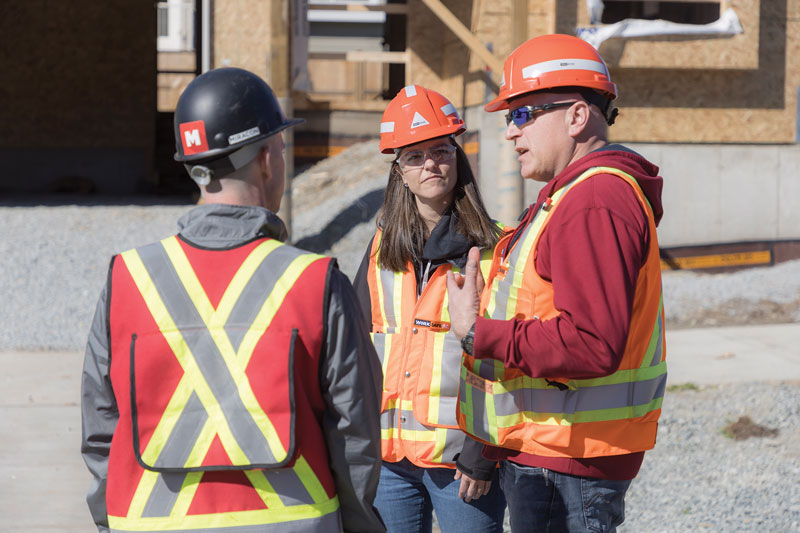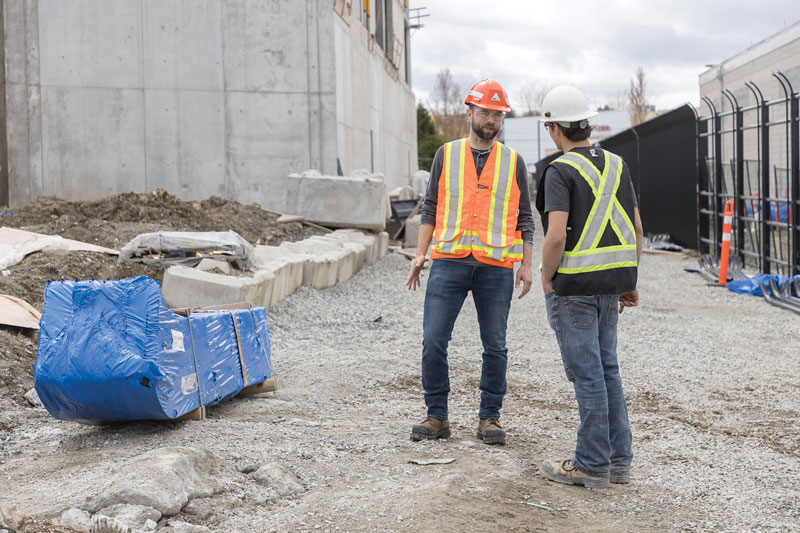
Each year in British Columbia, the construction sector logs around 1,400 workplace injuries and fatalities. There were 29 work-related deaths in the province, with 12 of those happening on jobsites and the remainder attributed to work-related disease manifesting well after exposure.
“I would say that overall, injury rates in the province are improving, but construction injury rates are consistently higher than the overall provincial injury rates,” said Dan Strand, director of prevention field services for WorkSafeBC, the provincial agency responsible for promoting injury prevention and regulatory oversight of employers.
The organization – funded by employers who pay mandatory premiums to insure against workplace injuries – has been administering the B.C. workplace insurance program since 1917. In 1932, the first two prevention officers were hired and devoted entirely to the lumber industry, says Strand – marking a fundamental change as WorkSafeBC began to emphasize injury prevention as a way to combat workplace health and safety risks.
Using its plentiful workplace injury data, WorkSafeBC zeroed in on the sectors with the highest risk of workplace injuries. It developed a series of High Risk Strategies – programs that promote occupational health and safety in four key industries: construction, forestry, health care/social services and manufacturing.

“We see the most claims in these areas,” said Strand. “We focused on where the claims were coming from and, more specifically, we focused on the risks that are driving those injuries. These common injury types are happening repeatedly.”
Falls from a ladder continue to cause injuries on construction sites, he says. Other common risks include being struck by mobile equipment, breaching high voltage limits of approach, musculoskeletal injuries and repetitive strain injuries. Implemented about 15 years ago, WorkSafeBC’s High Risk Strategies attempt to reduce the overall claims rate by empowering employers and employees to work together for safety’s sake.
“We have a lot of ways to encourage this partnership, including social media, webinars and site visits,” said Strand. “We reinforce the message through consultation, education and enforcement to influence safety practices. We also have our officers on-site dealing with employers and employees in these high-risk sectors.”
WorkSafeBC’s High Risk Strategies attempt to reduce the overall claims rate by empowering employers and employees to work together for safety’s sake.
WorkSafeBC’s risk analysis division oversees the educational aspect of the program, while its field services team implements onsite enforcement. Strand says there is a simple concept at the heart of the organization’s risk-based approach: Employers and workers are in the best position to have the greatest impact on health and safety through ongoing assessment and control of risk in the workplace.
“In the past, our strategies may have been more compliance-focused,” he said. “Regulations in and of themselves are an element of the risk-based approach, but we are trying to empower owners and workers to take ownership of managing their risks and heighten their awareness. We want them to engage their workers in the discussion of risk in order to support the enhancement of their safety culture.

“We are not safety cops. We do have around 300 officers, but there are 2.5 million workers and over 250,000 employers in 500,000 locations around the province. We can’t be everywhere. Employers and workers must understand their risks, and take ownership of the controls. We will support them through education and enforcement with a focus on ensuring long-lasting, sustainable compliance.”
Risk-based approach
In the deep foundation and piling industry, Strand says there are key safety concerns based on the type of work being performed. These include workers’ exposure to noise and welding fumes; the possibility of being struck by materials, equipment or tools; falls from elevation and the risk of drowning when working over water.
“Some of these risks take a long time to manifest and they are very serious,” he said, “which is why employers and workers need to take action today to prevent future health impacts.”
In addition to its High Risk Strategies, WorkSafeBC has developed a series of targeted initiatives – Industry Initiatives – with dedicated officer teams that focus on specific risks to support jobsite safety. Initiatives related to the piling industry include crane and mobile equipment, confined space, musculoskeletal injury and occupational disease prevention.
When completing onsite inspections, Strand says WorkSafeBC must decide where its officers’ time will be best spent. “We have predictive analytics tools that indicate which employers would best be served by our inspections,” he said. “We will make connections with those higher-priority employers. Officers arrive unannounced and speak with employers and worker representatives to find out how the company is managing specific risks through their foundational health and safety program elements.
We focused on where the claims were coming from and, more specifically, we focus on the risks that are driving those injuries.”
Dan Strand, WorkSafeBC
“They explain how they’re identifying those risks and controlling them. We look for evidence that they understand and are in compliance – for example, are workers getting the right training and supervision from the employer and is their prevention strategy effective?”
Strand says WorkSafeBC’s High Risk Strategies and Industry Initiatives are different from traditional health and safety programs. They aim to reinforce employers’ and workers’ understanding of actions taken to reduce health and safety risk through a process that includes consultation, education and enforcement.
Employer resources
Employers have a significant responsibility to ensure the health and safety of their workers. For those who are unsure of how to improve their current workplace health and safety program, Strand says there are many resources available. “WorkSafeBC.com is one of the best repositories for information on all of these risks. Any industry or topic can be accessed through a simple keyword search on our website,” he said.
“We also have partnerships with organizations like the B.C. Construction Safety Alliance and CraneSafe. As well, the Canadian Centre for Occupational Health & Safety has lots of free [information] on its world-class website, featuring manuals, videos and tool kits. We also offer an information line for any worker or employer who may have a question about health and safety, where you are patched directly to one of our officers.”

For workers, it’s important to know they have a voice when it comes to their roles and responsibilities. They have a right to know about workplace hazards and the right to refuse unsafe work. WorkSafeBC collaborates with various workplace safety bodies across the country to share learnings and strategies, although Strand says each province has structured its own unique approach to how it enforces their regulations.
“At WorkSafeBC, we have real time data from our claims and assessment teams, so we can examine injury data and make data-based decisions on where we will deploy our teams. We also enjoy strong marketing and communications support along with web-based materials,” he said. “We have the ability to issue hazard bulletins and risk advisories, plus our social media. It’s a big engine we can turn on to amplify our messages around workplace safety through lots of channels.”
Many officers on the prevention team at WorkSafeBC are individuals who previously worked in industries like deep foundations. They can “talk the talk” while applying the lens of worker safety and risk management.
“WorkSafeBC wishes to support employers and workers in building a safe and healthy workplace,” said Strand. “We are taking proactive steps with employers and workers in an effort to prevent injury, disease and death. We are also emphasizing that workers must be fully engaged in the process to help build a culture of safety.”